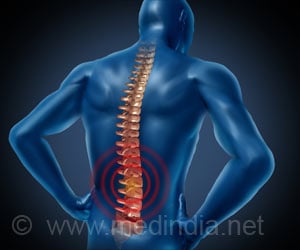Degenerative Spinal surgery has the rapidly expanding usage of robotics and computer navigation among many hospitals and spine surgeons.

‘Degenerative Spinal surgery has the rapidly expanding usage of robotics and computer navigation among many hospitals and spine surgeons for enhanced precision, accuracy, and predictability.
’





“I think they’re good enough to greatly improve what we do in terms of minimally invasive surgery. In my own practice, I’ve seen the benefits for patients in terms of a shorter hospital stay, quicker mobility and decreased healing times,” says Dr. Darren R. Lebl, MD, MBA, a spine surgeon at Hospital for Special Surgery (HSS). Spinal Surgery
The study team enrolled 65 adult patients (mean age of 59) with lumbar degenerative pathology. All the patients underwent a robotic-navigated posterior spinal fusion from June 2019 to July 2020 which had almost 364 instrumented pedicle screw implants.
The Medtronic Mazor X Stealth Edition system was used to perform the surgery. The entire procedures were recorded and compared with a preoperative CT image.
Most spinal surgeries are based on the use of hardware such as pedicle screws to stabilize the spine. The precise positioning of these screws is therefore critical for a successful surgery.
Advertisement
Additional time in the operating room and concerns regarding the accurate placement of pedicle screws are among the main barriers to implement new technologies. Hence the present study evaluated the accuracy of robotic- and navigation-assisted technology in screw placement of spinal surgery.
“Our main finding was that the screw positioning was very accurate, and the additional time needed to adopt these technologies into practice was small. In our study, the speed of robotic screw placement showed improvement within the first several cases,” says Dr. Lebl.
Source-Medindia









